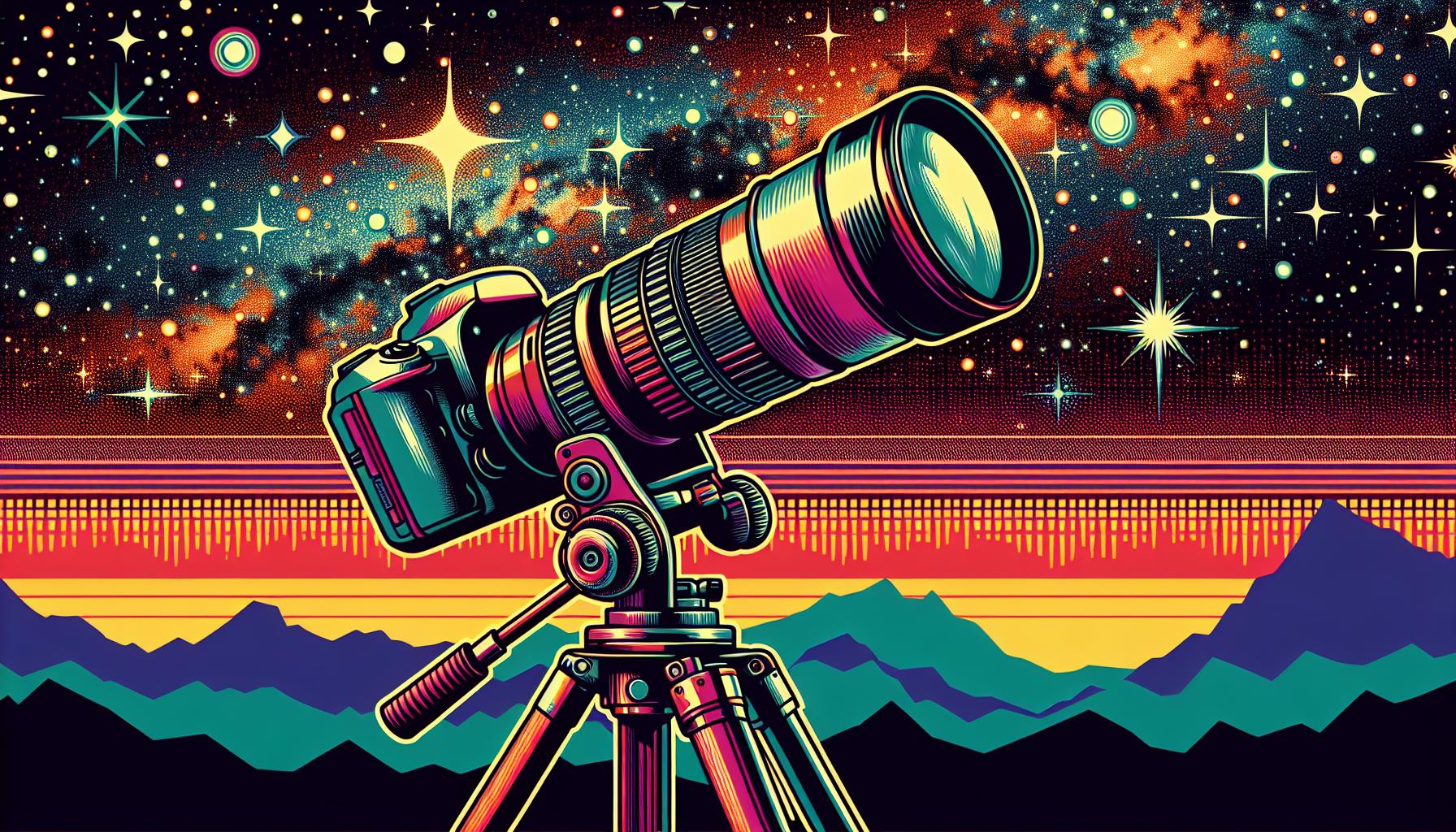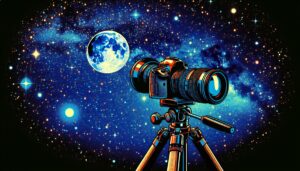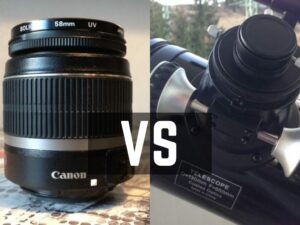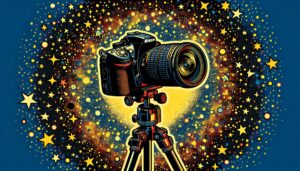This site contains affiliate links to products. I may receive a commission for purchases made through these links.
If you’re just dipping your toes into the vast ocean of astrophotography, it can feel a bit overwhelming. I’ve been there, and I know how it feels to be awed by the beauty of the universe, yet unsure of where to start capturing it.
Astrophotography isn’t just about pointing your camera at the night sky and hoping for the best. It’s about knowing your targets, understanding their movements, and learning how to bring out their best features. As a beginner, you’ll want to start with easy targets that are bright and relatively static.
The Importance of Knowing Your Targets
Taking the leap into the fascinating world of astrophotography, I quickly realized that it’s not just about pointing your camera upwards and pressing a button. Several factors go into capturing captivating photos of celestial bodies, but perhaps none more crucial than knowing your targets.
An understanding of astronomy can do wonders for your astrophotography skills. The sky is vast and continually changing. Stars, planets, and other celestial bodies are always in motion, taking on different positions during various seasons and periods of the day. This constant shift means that what you see in the night sky now will not be the same in a few hours or even a few minutes.
There are thousands of celestial bodies, but not all make good targets. Some are brighter and more static than others, making them ideal for beginners. The Moon, for example, is a bright, relatively static target that is visible to most of the world. Mars, Venus, Jupiter, and Saturn also make great starting points.
The primary key to knowing your targets is understanding their movements and alignments. For instance, the Moon orbits the Earth roughly every 27.3 days. Yet, the time it takes from one full moon to the next is about 29.5 days due to the Earth’s simultaneous orbit around the Sun. If you understand these movements, you’ll not only be able to predict when the moon will be in the perfect position for your shot but also capture different lunar phases.
The beauty of astrophotography lies in its unpredictability. The sky is a dynamic canvas, constantly shifting and renewing itself. Embrace this unpredictability, arm yourself with knowledge and patience, and soon you’ll find yourself mastering the art of capturing the night sky. As with any skill, progress doesn’t happen overnight. But I promise you, the stunning images you’ll capture are well worth the effort.
Beginner-Friendly Astrophotography Targets
Now that we’ve got a basic understanding of the celestial bodies’ movements, let’s talk about some great targets for beginners in astrophotography. Overall, it’s essential to start with relatively static and bright targets that are easy to locate.
The Moon tops our list. It’s the closest celestial body to us and doesn’t need an expensive telescope to capture. You can play around with different lunar phases and experiment with your equipment settings to get that perfect shot.
Next, we have the bright planets of our solar system – Mars, Venus, Jupiter, and Saturn. They’re visible most nights and display interesting features like the rings of Saturn, the cloud bands on Jupiter, or Venus in various crescent phases.
Another interesting subject is the Andromeda Galaxy. The closest spiral galaxy to our Milky Way, it’s a perfect test subject for beginners who want to delve into deep-sky long-exposure photography.
Lastly, don’t forget our home galaxy’s glittering center – the Milky Way. While it needs darker skies and certain months to be seen, it holds the promise of impressive nightscape images.
| Astrophotography Targets | Unique Features |
|---|---|
| The Moon | Different lunar phases |
| Mars, Venus, Jupiter, Saturn | Visible most nights, interesting surface /atmospheric features |
| Andromeda Galaxy | Closest spiral galaxy, deep-sky long-exposure photography |
| Milky Way | Dark skies, impressive nightscapes |
Every beginner astrophotographer shouldn’t underestimate the value of persistence. Most of the learning happens during hands-on practice. So, equip yourself with all the knowledge and patience you can muster, and get ready for the exciting times that await. Just imagine the stunning images you’ll be able to capture with the right conditions and equipment. After all, the effort you put in will surely be worth the stellar results.
Bright and Static Targets for Beginners
If you’re new to the world of astrophotography, it’s crucial to start with bright and more static targets. These celestial bodies are not just easier to locate, but also provide considerable detail even with basic equipment. The reason for their brightness is their proximity to Earth so you’re in for some stunning first tries.
When we talk about bright and static targets, the Moon, Mars, Venus, Jupiter, and Saturn top the list. The Moon, our closest celestial neighbor, is an excellent choice for beginners. Its proximity to Earth gives us a fabulous view of its craters, hills, and valleys. Plus, the phase of the Moon changes nightly, offering different visuals each time you train your telescope towards it.
Mars, Venus, Jupiter, and Saturn also work well for beginners. Their brightness and relatively static position make it easier to capture them on camera. They are also fascinating subjects. From the red hue of Mars to the shining rings of Saturn, you’re bound to capture some captivating images.
Astrophotography isn’t all about staying still and capturing the target. It’s also about predicting and understanding the movements and alignments of these celestial bodies. To enhance your understanding and make the most of the opportunities that these bodies present, I recommend studying their specific movements. This way, you’ll know when to set up your gear and won’t miss out on the perfect shot.
Adding on to the list of bright and relatively static targets, the Andromeda Galaxy and our own Milky Way are excellent choices too. Being two of the brightest objects in the sky, they offer striking photographic opportunities. Andromeda, the nearest spiral galaxy to the Milky Way, provides an irresistible challenge to astrophotography enthusiasts. Meanwhile, capturing the milky glow of our own galaxy will truly test your skills.
Remember, astrophotography requires a blend of unpredictability, knowledge, patience, and creativity. As you trace the grandeur and mystery of these celestial bodies, you’ll unveil the unique beauty nestled amidst the cosmos.
But then again, who knows what else you might discover in the quiet dark? That’s the beauty of astrophotography.
Tips for Capturing the Best Features of Astrophotography Targets
Now that we’ve identified the beginner-friendly astrophotography targets, let’s delve into some practical tips on how to capture their most stunning features. These are methods I’ve personally found useful in my journey and I’m excited to share them with you.
First off, try to grasp the concept of composition in astrophotography. This refers to how objects are arranged in your shot. You’ll want to consider the placement of your celestial target, how much of the sky it’s occupying, and what terrestrial objects might be in the frame. This can add a certain depth and context, making your photos more aesthetically pleasing.
One of the most fundamental steps is understanding and utilizing the right equipment. Even though the targets we’ve discussed can be captured with basic equipment, to bring out their unique features in detail you’ll need to invest in a decent quality telescope and a DSLR or mirrorless camera. Don’t be intimidated by complex gear. Start small and gradually upgrade as your skill progresses.
Experimenting with exposure settings is key. Depending on what you’re photographing, the ideal exposure time can range from a few seconds to several minutes. For example, if you’re photographing the Moon, you might want to start with a shorter exposure time to prevent it from appearing overexposed.
Another tip is to take advantage of online predictions tools like Stellarium or Sky Guide for timing your photography sessions. These tools help you track the positions of celestial bodies and alert you about forthcoming events like meteor showers and eclipses.
Lastly, patience is pivotal. Expect that your initial attempts may not yield the perfect shot. Remember, astrophotography is a learning process. The beauty of this hobby lies in the trial and error, the fails and wins. Each effort brings you one step closer to capturing that picture-perfect shot of the cosmos.
Conclusion: Starting Your Journey in Astrophotography
So you’re ready to dive into the world of astrophotography. Remember, it’s all about the right composition, the right gear, and the right timing. Don’t forget to include some earthly elements in your frame and play around with your exposure settings. Online tools can help you predict the best times to shoot and keep track of celestial events.
But remember, patience is key. It’s a learning curve and every shot you take brings you one step closer to that perfect image. Understanding the sky’s movement is crucial and it’ll add a new dimension to your shots. Now, it’s time to embark on your astrophotography journey and capture the beauty of the cosmos. The sky’s not the limit, it’s your playground.
FAQ
What is the importance of understanding composition in astrophotography?
Understanding composition is key in astrophotography. It involves considering the placement of celestial targets and including terrestrial objects in the frame for visual interest and context.
What equipment is needed for successful astrophotography?
The right equipment, including a decent quality telescope and a DSLR or mirrorless camera, is crucial to bring out the unique features of astrophotography targets.
How can online prediction tools be useful in astrophotography?
Online prediction tools can help in timing astrophotography sessions. They provide information regarding celestial events, helping photographers capture shots at the ideal moment.
Why is understanding celestial movement and events significant in astrophotography?
Understanding celestial movement and tracking the celestial events calendar can help capture awe-inspiring shots. They provide insight into when and where to best point the camera for remarkable astrophotography.




